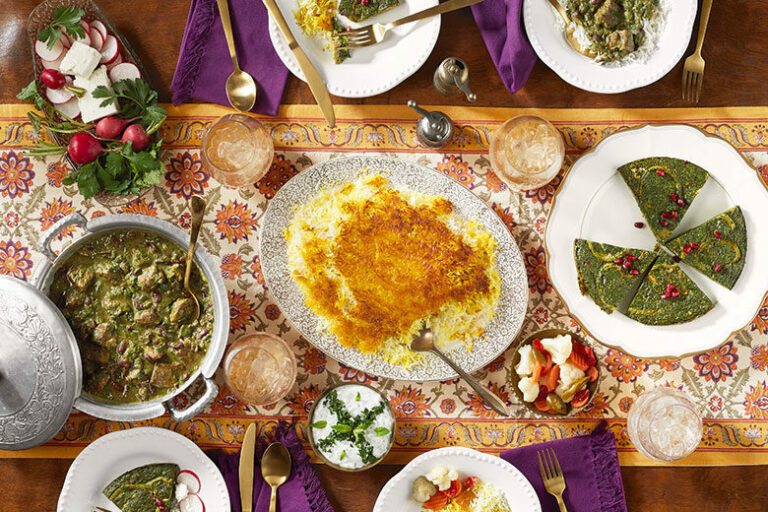Introduction: Regional Variations in Iranian Cuisine
Iranian cuisine is a reflection of the country’s rich history, geography, and cultural diversity. From the aromatic spices of the souks to the fragrant herbs of the mountains, Iranian cuisine features a myriad of flavors that vary from region to region. Each province and city has its own unique culinary traditions, which have been shaped by the local ingredients, climate, and cultural influences.
Northern Iran: Hearty Rice Dishes and Seafood Specialties
Northern Iran is known for its hearty rice dishes, which are often flavored with saffron, barberries, and dill. Seafood is also a popular ingredient in the northern provinces, thanks to the Caspian Sea. Smoked fish, caviar, and sturgeon are some of the specialties you can find in the region. Other popular dishes include Mirza Ghassemi (smoked eggplant with tomato and garlic), Baghala Ghatogh (lima bean stew), and Fesenjan (chicken or duck in a walnut and pomegranate sauce).
Southern Iran: Spices, Herbs, and Tandoor-Baked Bread
Southern Iran is characterized by its hot and humid climate, which has influenced the local cuisine. The region is known for its aromatic spices, such as cardamom, cinnamon, and cumin, which are used to flavor dishes like Ghalieh Mahi (spicy fish stew) and Khoresh Sabzi (herb stew). Tandoor-baked bread is also a staple of southern Iranian cuisine, and is often served with dishes like Kabab Koobideh (grilled minced meat) and Faloodeh (a frozen dessert made with rice noodles and rosewater).
Western Iran: Stews, Grilled Meats, and Dairy Products
Western Iran is home to some of Iran’s most iconic dishes, including Gheimeh (lamb stew with yellow split peas), Ghormeh Sabzi (a herb and meat stew), and Koofteh Tabrizi (spicy meatballs). Grilled meats, such as Joojeh Kabab (chicken kebab) and Barg (sirloin steak), are also popular in the region. Western Iran is also known for its dairy products, particularly Kashk (a type of yogurt), which is used to flavor many dishes.
Eastern Iran: Kebabs, Dumplings, and Saffron-Infused Rice
Eastern Iran is known for its hearty and filling dishes, including Kebab-e-Torsh (sour lamb kebab), Ash-e-Reshteh (a thick soup made with noodles and beans), and Mantu (steamed dumplings filled with meat and onions). Saffron-infused rice is a staple of the eastern Iranian cuisine, and is often served with dishes like Kebab Kubideh (grilled minced meat) and Ghormeh Sabzi. Eastern Iran is also famous for its saffron production, which is considered to be the best in the world.
Conclusion: Exploring the Rich Diversity of Iranian Cuisine
Iranian cuisine is a vibrant and diverse culinary tradition that reflects the country’s long and complex history. Whether you prefer hearty rice dishes or spicy stews, grilled meats or saffron-infused rice, Iranian cuisine has something to offer for everyone. By exploring the regional variations of Iranian cuisine, you can discover the unique flavors and ingredients that make this cuisine so special. So why not embark on a culinary journey through Iran and experience the rich diversity of its cuisine for yourself?

